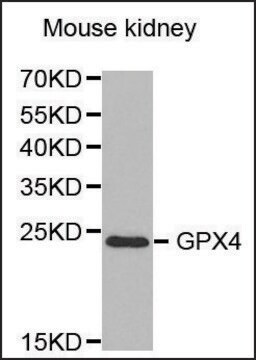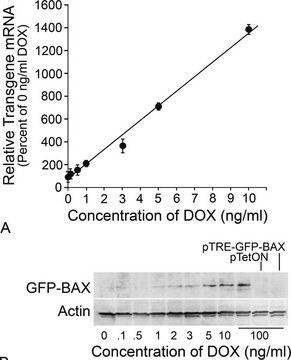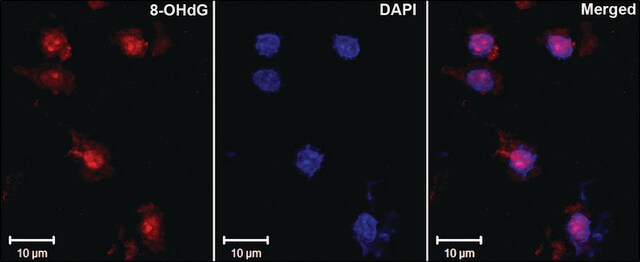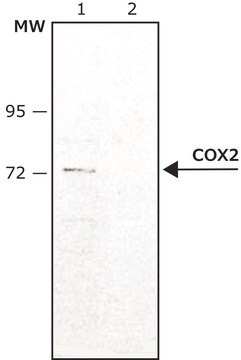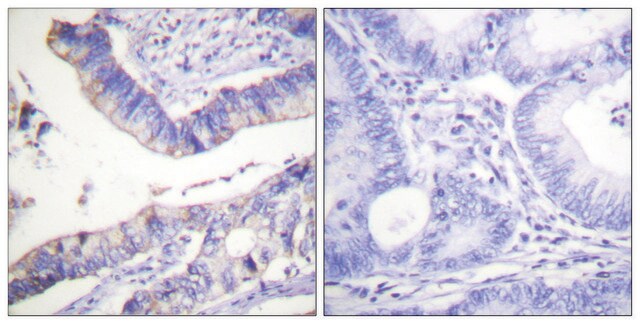MABF1969
Anti-Glutathione Peroxidase 4 Antibody, clone Mab63-1
clone Mab63-1, from mouse, purified by affinity chromatography
Sinónimos:
Phospholipid hydroperoxide glutathione peroxidase cytosolic, cGPx4, PHGPx, Glutathione peroxidase 4, GPx-4, GSHPx-4
About This Item
Productos recomendados
biological source
mouse
Quality Level
antibody form
purified immunoglobulin
antibody product type
primary antibodies
clone
Mab63-1, monoclonal
purified by
affinity chromatography
species reactivity
human, mouse
packaging
antibody small pack of 25 μg
technique(s)
dot blot: suitable
electron microscopy: suitable
immunohistochemistry: suitable (paraffin)
immunoprecipitation (IP): suitable
western blot: suitable
isotype
IgG2aκ
NCBI accession no.
UniProt accession no.
shipped in
ambient
target post-translational modification
unmodified
Gene Information
human ... GPX4(2879)
General description
The cytosolic isoform is ubiquitously expressed at moderate levels in most mammalian cells. On the other hand, mitochondrial and nuclear isoforms are overexpressed in spermatoid cells. Clone Mab63-1 specifically recognizes cGPx4 in human and its ortholog in mouse. However, it does not recognize rat GPx4. GPx4 is a considered to be a moonlighting protein that has been implicated in anti-oxidative defense, gene expression regulation, and programmed cell death, and as a structural protein in spermatogenesis. Homozygous GPx4-deficient mice are reported to die utero before E7.5. Similarly, homozygous mice expressing catalytically inactive GPx4 variants (Sec46Ala/Ser mutant) do not survive beyond the 7th day of embryogenesis. (Ref.: Borchert, A., et al (2010). Immunol. Lett. 133 (2); 85-93).
Specificity
Immunogen
Application
Immunoprecipitation Analysis: A representative lot detected Glutathione Peroxidase 4 in Immunoprecipitation applications (Borchert, A., et. al. (2010). Immunol Lett. 133(2):85-93).
Immunohistochemistry Analysis: A representative lot detected Glutathione Peroxidase 4 in Immunohistochemistry applications (Borchert, A., et. al. (2010). Immunol Lett. 133(2):85-93; Brutsch, S.H., et. al. (2015). Antioxid Redox Signal. 22(4):281-93).
Western Blotting Analysis: A representative lot detected Glutathione Peroxidase 4 in Western Blotting applications (Brutsch, S.H., et. al. (2015). Antioxid Redox Signal. 22(4):281-93; Borchert, A., et. al. (2010). Immunol Lett. 133(2):85-93).
Dot Blot Analysis: A representative lot detected Glutathione Peroxidase 4 in Dot Blot applications (Borchert, A., et. al. (2010). Immunol Lett. 133(2):85-93).
Electron Microscopy Analysis: A representative lot detected Glutathione Peroxidase 4 in Electron Microscopy applications (Brutsch, S.H., et. al. (2016). J Biol Chem. 291(45):23578-23588).
Inflammation & Immunology
Quality
Western Blotting Analysis: 2 µg/mL of this antibody detected Glutathione Peroxidase 4 in lysate of HEK293 cells transfected with Gpx4.
Target description
Physical form
Storage and Stability
Other Notes
Disclaimer
¿No encuentra el producto adecuado?
Pruebe nuestro Herramienta de selección de productos.
Storage Class
12 - Non Combustible Liquids
wgk_germany
WGK 1
flash_point_f
does not flash
flash_point_c
does not flash
Certificados de análisis (COA)
Busque Certificados de análisis (COA) introduciendo el número de lote del producto. Los números de lote se encuentran en la etiqueta del producto después de las palabras «Lot» o «Batch»
¿Ya tiene este producto?
Encuentre la documentación para los productos que ha comprado recientemente en la Biblioteca de documentos.
Nuestro equipo de científicos tiene experiencia en todas las áreas de investigación: Ciencias de la vida, Ciencia de los materiales, Síntesis química, Cromatografía, Analítica y muchas otras.
Póngase en contacto con el Servicio técnico
